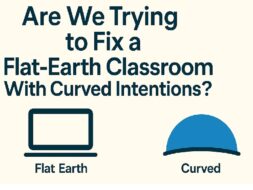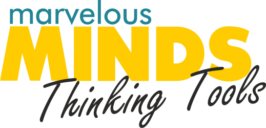This Blog must be read together with Why Bloom’s Taxonomy Levels Are Not a Reflection of Reality
Have you ever felt like your teaching is rich with activity, but somehow lacks synergy? That your students learn the content, but don’t seem to grasp how it all fits together? If so, you’re not alone—and the solution lies in understanding the levels of thinking.
Let me introduce you to a visual metaphor I use with educators: concentric circles representing five levels of thinking—from the tiniest details to the big picture. Each level offers a unique role in how learning is processed, structured, and connected.
Let’s unpack them.
The pico layer is the learner’s internal ignition point — the moment thinking first comes alive inside the Mothership of All Thinking. It is not a lesson, not a worksheet, not content.
It is the brain’s own beginning of meaning-making.
The pico layer is where the brain receives its first impression of a concept and begins organising raw perception into early structure. It is where Step Zero, curiosity, and the chronosensor quietly stabilise the mental field so that the mind can begin to sort, compare, and orient.
Most classrooms mistake this for the entire process of learning — but pico is only the spark, not the flame.
Yet this spark is powerful:
because at the pico layer the brain is already searching for relationships, not isolated facts.
- It looks for where have I seen this before?
- It looks for how does this fit with what I already know?
- It looks for what pattern is emerging here?
This is why siloed teaching collapses so easily:
when learning is introduced as fragments, the brain cannot stabilise a pattern at the pico layer — it fibrillates instead of organising.
But when the pico layer is treated as the birthplace of relational meaning, something extraordinary happens:
- Mathematics begins to talk to science.
- Language begins to talk to social studies.
- Rhythm in reading echoes rhythm in life sciences.
- Structure in grammar helps structure thinking in maths.
The pico layer becomes the learner’s first experience of curved learning — where ideas bend toward coherence rather than stay trapped in subjects.
Nano Level: The Theme Within the Subject = the lesson.
Zooming out, the nano level connects individual lessons into a theme. A theme helps learners see relationships between concepts, topics, or units within a subject.
Here, the question becomes:
"How do these lessons relate to each other?"
This is where Thinking Tools shine. By using graphic organizers like Tree Maps or Bridge Maps, students begin organizing and comparing ideas, shifting from surface to deep thinking.
Micro Level: The Subject Itself
The micro level frames the entire subject—Mathematics, Life Sciences, History. It’s where the subject's architecture becomes visible. Students begin to see the bigger structure: how the various themes build on one another, spiral, or evolve across grades.
Now learners ask:
"What is this subject really about?"
A strong teacher-facilitator connects nano-level thinking to the broader micro level, revealing the purpose and scope of the subject.
🌐 Meso Level: Interdisciplinary Thinking
Here’s where things get exciting. The meso level is where subjects meet. This is the territory of interdisciplinary learning—Math connecting to Physics, History intersecting with Literature, or Geography blending with Life Sciences.
At this level, students begin to ask:
"How do different subjects help me understand the same world?"
This level breaks down silos. It’s where we stop teaching subjects in isolation and start facilitating synergistic learning.
🌍 Macro Level: Curriculum—and Beyond
The macro level encompasses the entire curriculum—sometimes even beyond it. It’s the level at which we align outcomes across subjects, phases, and even school systems. It includes national policy, global educational trends, and, ideally, the lifelong learning goals of every student.
It’s here that students start to think:
"How does what I learn prepare me for life?"
At this level, learning becomes meaningful, relevant, and purposeful. It’s also the level most often missing in fragmented education systems.
Why This Matters
Understanding these levels is not just a thinking exercise—it’s a teaching revolution. When educators become aware of these concentric circles, we begin:
- Designing lessons that serve a bigger purpose.
- Making connections visible to students.
- Moving away from rote learning toward cognitive integration.
- Facilitating rather than dictating.
- Empowering learners to think critically, connect broadly, and apply wisely.
💡Final Thought
Many teachers are experts at the pico and nano levels, but few are trained to think at the meso or macro levels. If we want to prepare learners for complexity, adaptability, and the real world, we must teach in a way that mirrors how the brain learns—in connected, layered, meaningful ways.
Let’s not just teach lessons.
Let’s develop thinkers.
Next to follow is how this can be helpful in assessments.







